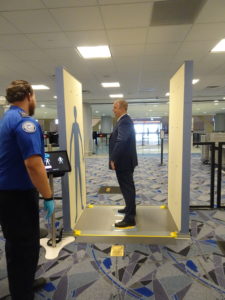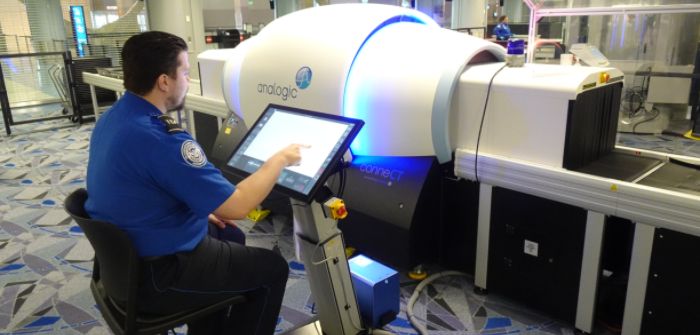The USA’s Transportation Security Administration (TSA) and Las Vegas McCarran International Airport have unveiled the Innovation Checkpoint, the result of a collaboration between the two organizations.
The Innovation Checkpoint enables side-by-side testing and evaluation of emerging security technologies in a live checkpoint environment. This is the first and only one of its kind nationwide, according to the organizations.
Technologies that are being evaluated in the Innovation Checkpoint span all aspects of the traveler security screening experience. The checkpoint currently has four fully equipped screening lanes.
Travelers can expect to see new digital signage as they enter the Innovation Checkpoint. The display towers enable TSA to digitally convey important travel information and reminders such as screening procedures and estimated wait times. Digital signage also lets TSA quickly modify the information based on real-time events in the security checkpoint.
The Credential Authentication Technology unit scans a passenger’s photo identification to verify the authenticity of the document. The system

uses information from the photo identification to confirm a passenger’s flight status by cross-referencing it against the Secure Flight database, all without needing to present a boarding pass.
Computed Tomography scanners screen passengers’ carry-on luggage. The CT technology applies sophisticated algorithms for the detection of explosives and other threats to commercial aviation by creating a 3D image, which can be rotated on three axes for a thorough visual image analysis by a TSA x-ray operator. The technology is similar to CT technology used in the medical field.
An enhanced Advanced Imaging Technology (eAIT) body scanner, which uses millimeter wave technology, screens travelers. The open design, flat-panel unit lets travelers stand in a more relaxed way during the scan, with their arms at their side instead of over their head. Also, the TSA officer receives an on-screen prompt if the traveler is improperly positioned during the scan. The eAIT’s open design enables travelers in wheelchairs to access the sterile area of the checkpoint without having to pass through an American with Disabilities Act-compliant gate.
TSA screened the first passengers through the Innovation Checkpoint in early June. Over the past weeks, TSA has continued to install additional equipment and add new features.
United Airlines has been an active partner in the project. Once the Innovation Checkpoint became operational, many of the airlines’ customers departing Las Vegas McCarran were screened through the Innovation Checkpoint. The airline has also assisted in the collection of feedback on its customers’ security experience.
The Innovation Checkpoint at McCarran will continue to serve as the greenspace for the entire agency to pilot and gather data on new strategies that will ultimately increase security effectiveness, enhance the passenger experience, and improve the TSA officer workplace.
“Our long-term vision is that this checkpoint will serve as an innovative sandbox for the entire agency to demonstrate new strategies and solutions that will ultimately increase security effectiveness, heighten the passenger experience, and deliver enhanced capabilities to our front-line personnel,” said Austin Gould, TSA assistant administrator for requirements and capabilities analysis.


